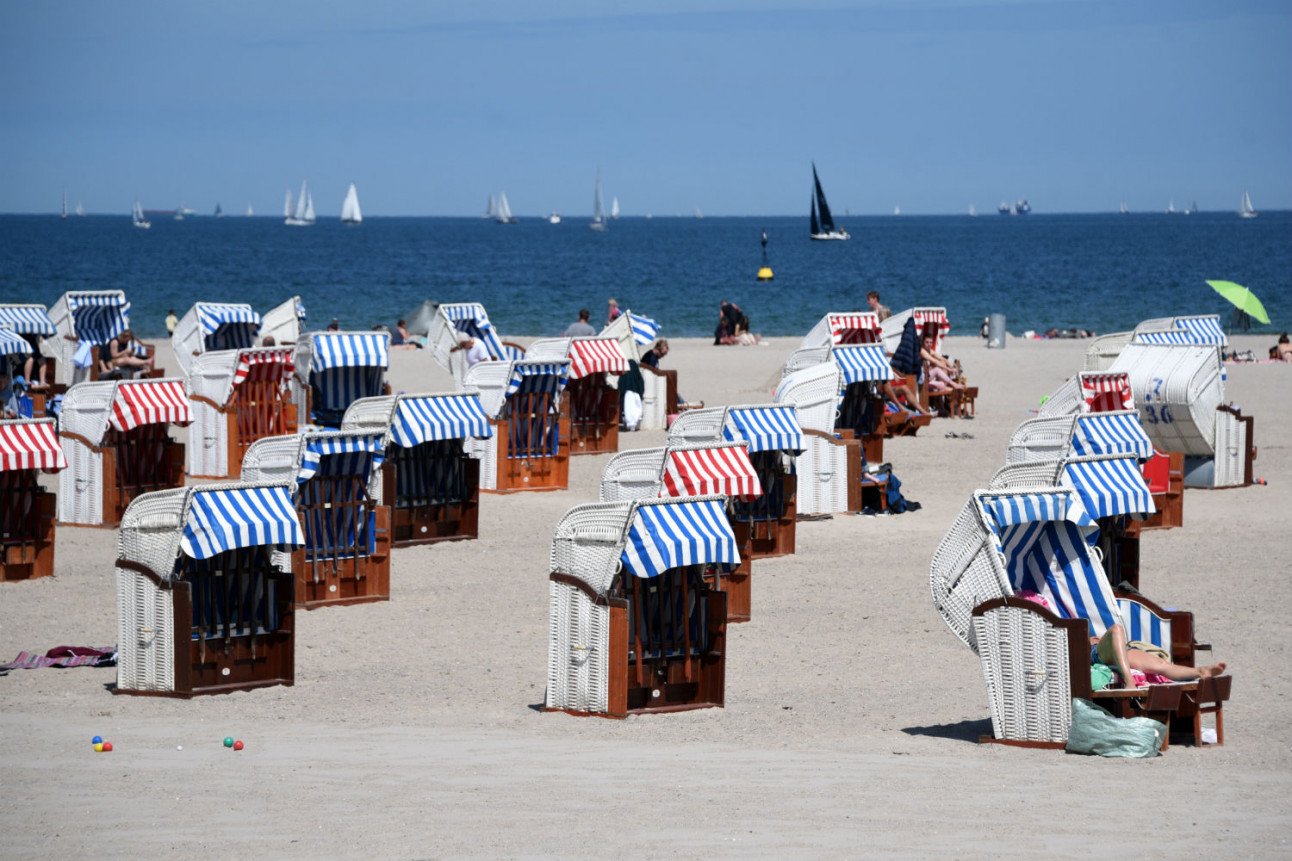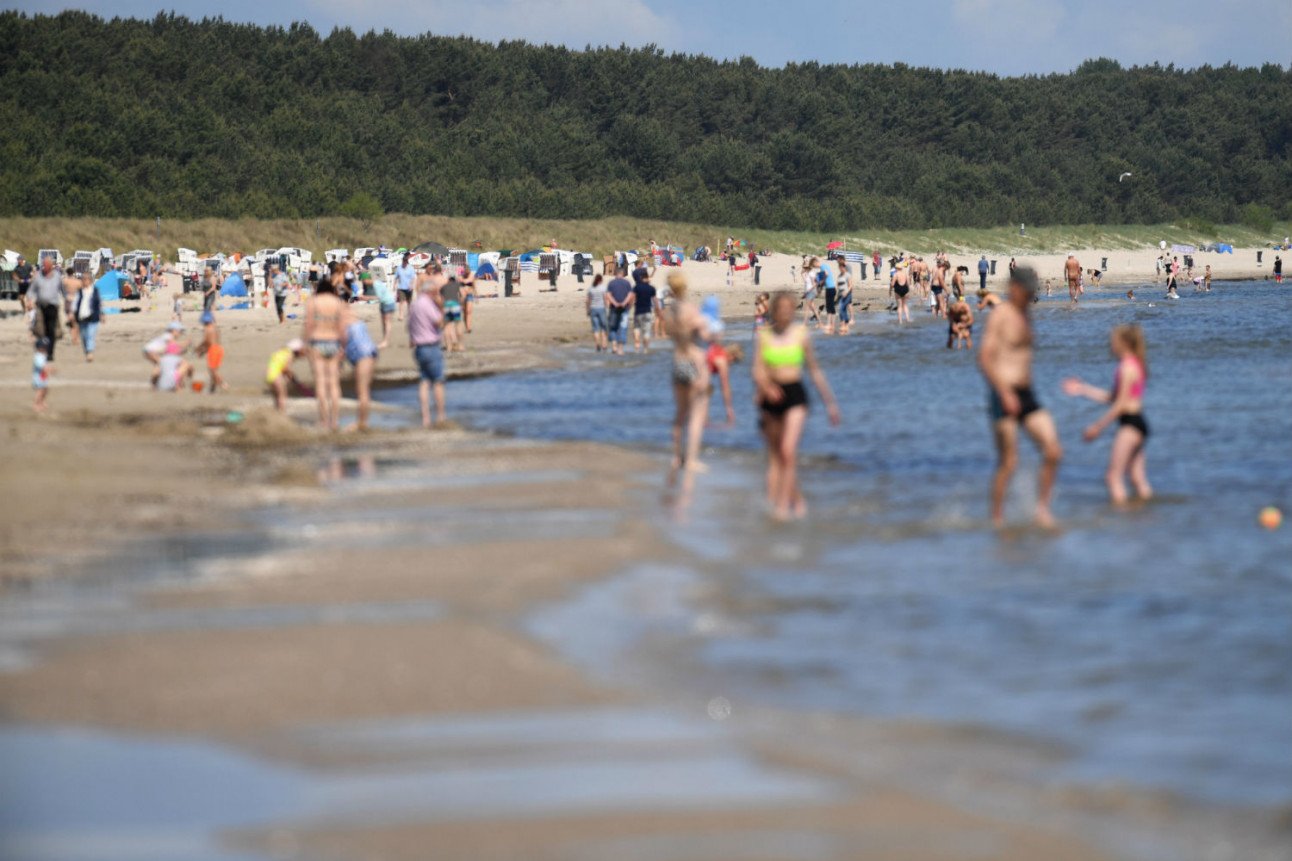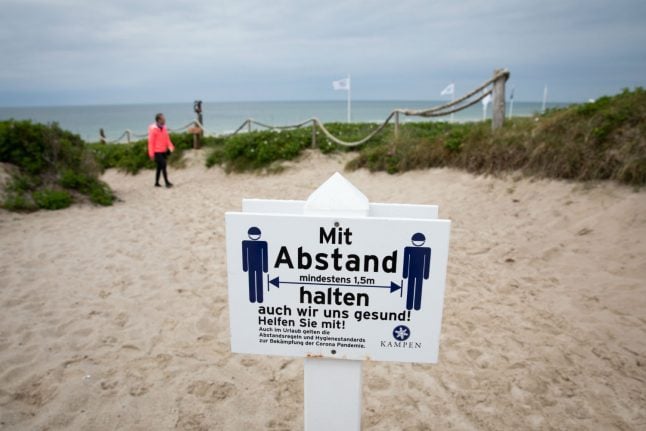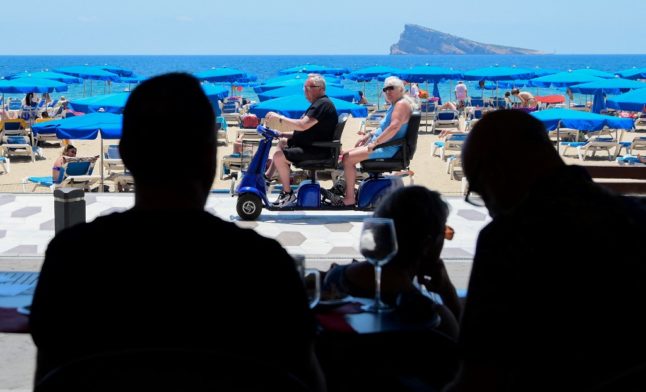A reservation app for trips to the beach is currently being discussed in the northernmost state of Schleswig-Holstein, while day visitors to the East Frisian Islands are being turned away. In both cases, the goal is the same: to enable a safe trip with sufficient distance in corona times.
Even if the public holidays in May were mostly calm, reports of full beaches, such as those on the island of Sylt and in the coastal town of Scharbeutz, have gained a lot of attention.
The Mayor of Scharbeutz was forced to turn away day trippers to the Bay of Lübeck on Whit Monday afternoon and, two days earlier, over a hundred people queued for the toilet at the Kampener beach crossing in Sylt.
READ ALSO: Booming and bustling: How is tourism impacting Germany's Baltic Coast?
Seaside solutions
In order to control the streams of holidaymakers and day visitors expected over the summer, the tourist destinations on the North and Baltic Seas are coming up with various solutions: from parking guidance systems, floor stickers with distance rules, one-way street systems on the beach, to beach apps.
Schleswig-Holstein has also been implementing digital solutions to prevent the gathering of large numbers of people in holiday resorts and on beaches. A so-called beach app is currently being developed for the Bay of Lübeck.
It won’t be a proper app, but an internet platform which works like an online booking system for theatre seats, explained spokeswoman for the Lübeck Bay Tourism Agency, Doris Wilmer-Huperz.
Day tourists will be able to see which beach section is already full and for which they can still book a ticket. But holiday makers who have booked a stay in one of the participating destinations, as well as residents and second home owners, will still be allowed to visit the beach as normal.
“It is a service for day tourists,” said Wilmer-Huperz. This way, you avoid the frustration of leaving Hamburg early in the morning only to find that you’re not allowed to go on the beach.

21.05.2020, Schleswig-Holstein, Lübeck-Travemünde: Only a few beach chairs are occupied on the East Sea beach. Photo: DPA
Compliance with the social distancing rules is more difficult on narrow beaches such at those which are popular with day visitors on the Bay of Lübeck than, for example, on the North Frisian Islands or in St. Peter-Ording.
On such beaches, which are wide enough for people to avoid each other, the need for such an app is in dispute, with Schleswig-Holstein's Minister of Tourism Bernd Buchholz (FDP) having explicitly stated that there is no obligation to introduce the app.
Usedom and Mecklenburg-Western Pomerania also have no plans for implementing a beach app. On the island of Usedom, things seem almost the same as they were before corona: queues of cars on the streets, lots of walkers on beach and promenades, cyclists, packed street cafes.
“Our beaches are full,” says Nadine Riethdorf, President of the Usedom Tourism Association and there won’t be any access restrictions: “the beach is a common property.” She has not yet experienced any issues with the 1,5-meter distancing rule. Unlike in Schleswig-Holstein, Mecklenburg-Western Pomerania is still prohibiting entry for day visitors from other federal states.
Ban on day-trippers
The East Frisian islands like Norderney and Borkum also have no plans to introduce guidance systems or beach reservations. “We still have a restriction: the ban on day tourists,” said the managing director of the East Frisian Islands tourism company.
“As long as we don't have day tourists, we basically have no problem with over capacity on the beach,” especially since the beaches are large enough to place beach chairs at a sufficient distance, he said.
As with the rest of Lower Saxony, there has been gradual easing of the restrictions on these islands: first holiday apartments were allowed to be rented, then holidaymakers were allowed to stay in hotels.
The Mayor of the city of Norderney, Frank Ulrichs thinks that the ban on day trip visitors should still continue, explaining: “when the weather is nice, there are hundreds and hundreds of people on the beach.” On some weekend days, there can be up to 10,000 visitors.

Karlshagen in Mecklenburg-Western Pomerania on June 9th: Bathers enjoy the hot early summer weather in Karlshagen. Photo: DPA
Bans on day visitors were also in place over the May public holidays on the North Frisian Islands and in St. Peter Ording. According to the authorities this worked quite well, although no such restrictions are currently planned for the tourist hotspots in Schleswig-Holstein.
'Individual responsibility'
It is clear, however, that the situation should continue to be closely monitored. “We can’t have everyone lying close together like sardines,” Schleswig-Holstein's Prime Minister Daniel Günther (CDU) recently told the Tagesspiegel.
The head of tourism in Rostock-Warnemünde, Matthias Fromm, is happy with the start of the season: “It's nice to be able to be hosts again.” He is aware that pictures of the crowded Warnemünde promenade provoked debate about security, but a strict procedure against violations of social distancing rules is unrealistic.
“Even if we have beach guards and the police, it still remains up to the individual responsibility of our guests.”
“We rely on everyone involved in tourism to treat each other with respect and responsibility,” says Ulrich Langer, chief of tourism in Kühlungsborn. That also applies to the beach. “People can avoid each other if they want to,” says Langer. “But you have to want it too.”
Normal
0
21
false
false
false
DE
X-NONE
X-NONE
/* Style Definitions */
table.MsoNormalTable
{mso-style-name:”Normale Tabelle”;
mso-tstyle-rowband-size:0;
mso-tstyle-colband-size:0;
mso-style-noshow:yes;
mso-style-priority:99;
mso-style-parent:””;
mso-padding-alt:0cm 5.4pt 0cm 5.4pt;
mso-para-margin-top:0cm;
mso-para-margin-right:0cm;
mso-para-margin-bottom:8.0pt;
mso-para-margin-left:0cm;
line-height:107%;
mso-pagination:widow-orphan;
font-size:11.0pt;
font-family:”Calibri”,sans-serif;
mso-ascii-font-family:Calibri;
mso-ascii-theme-font:minor-latin;
mso-hansi-font-family:Calibri;
mso-hansi-theme-font:minor-latin;
mso-bidi-font-family:”Times New Roman”;
mso-bidi-theme-font:minor-bidi;
mso-fareast-language:EN-US;}



 Please whitelist us to continue reading.
Please whitelist us to continue reading.
Member comments